Abstract
AIM: To examine cancer patients' use, and satisfaction with touchscreen information systems. By examining the experience of subgroups, to address issues of equality of access. PATIENTS: 345 patients starting radiotherapy at the Beatson Oncology Centre (BOC), Glasgow. METHODS: Patients were invited to use a touchscreen computer at the start of treatment. They were sent a printout of what they saw on screen. Patients had open access to the system. Data were collected at recruitment, intervention, 3 weeks and 3 months. Predictor variables included: patients' demographics, information preferences, technology use, and psychological state. Outcome variables included: use and views of the computer and printout. RESULTS: Younger, broadsheet readers with previous computer use were more likely to find the system easy to use. Older, tabloid readers were more likely to find the content new and relevant. DISCUSSION: We need to make systems adapt to users' different needs. More effort should be made to provide affordable information for older, generally less literate and technologically less literate groups in suitable locations.
Full text
PDF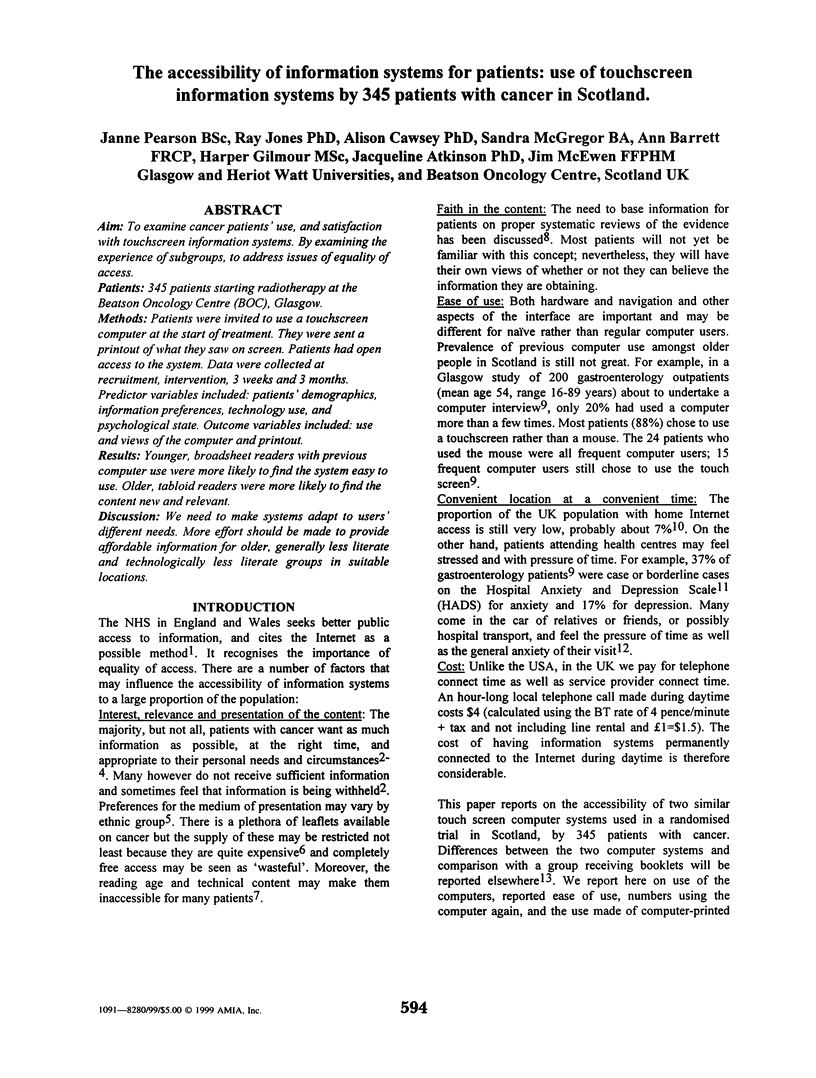
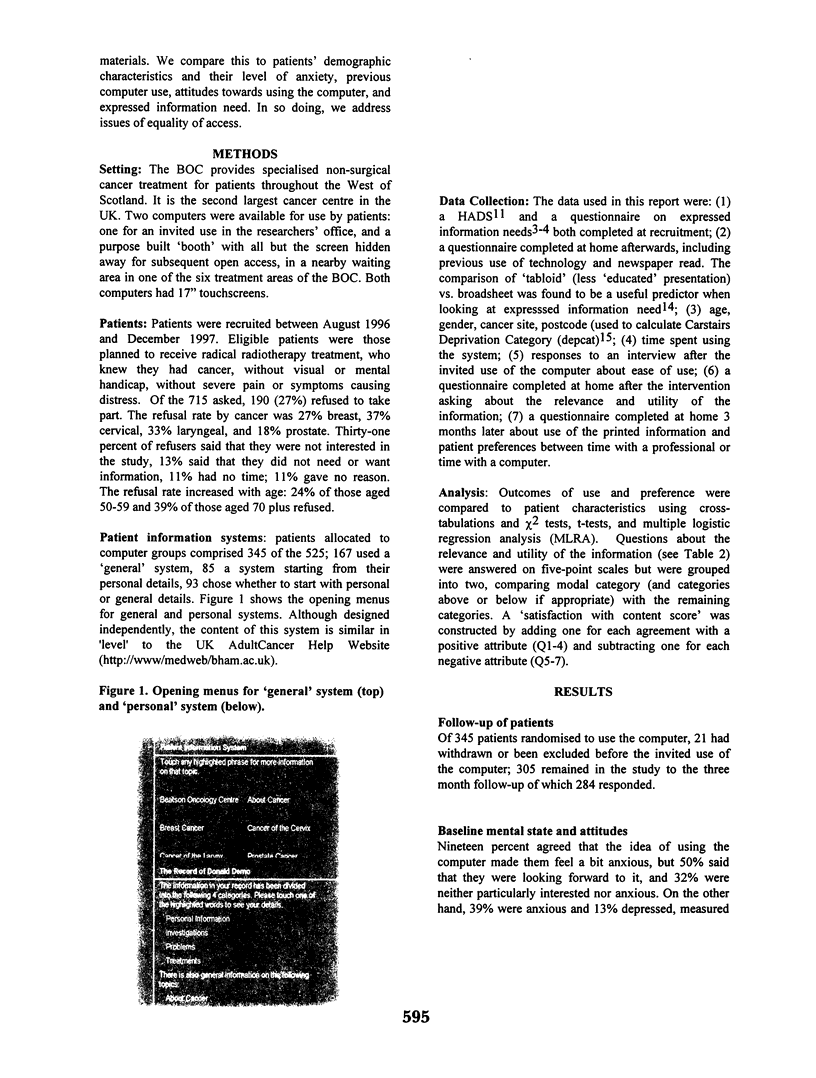
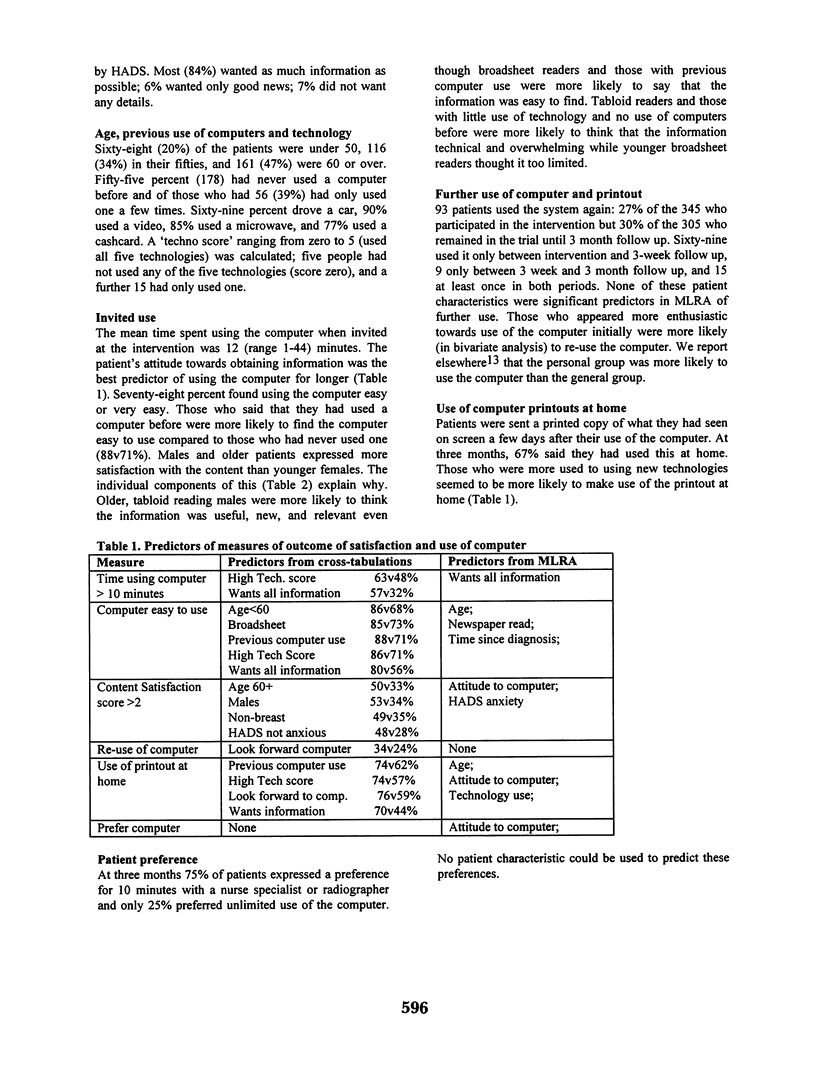
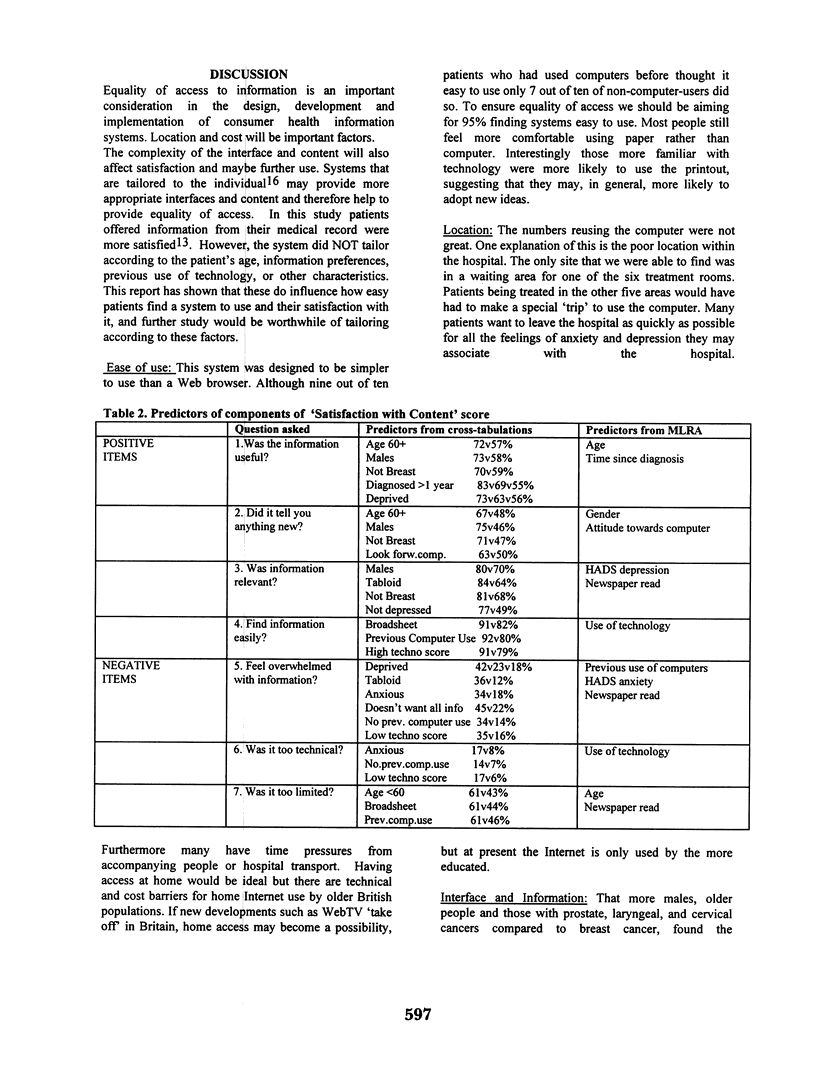
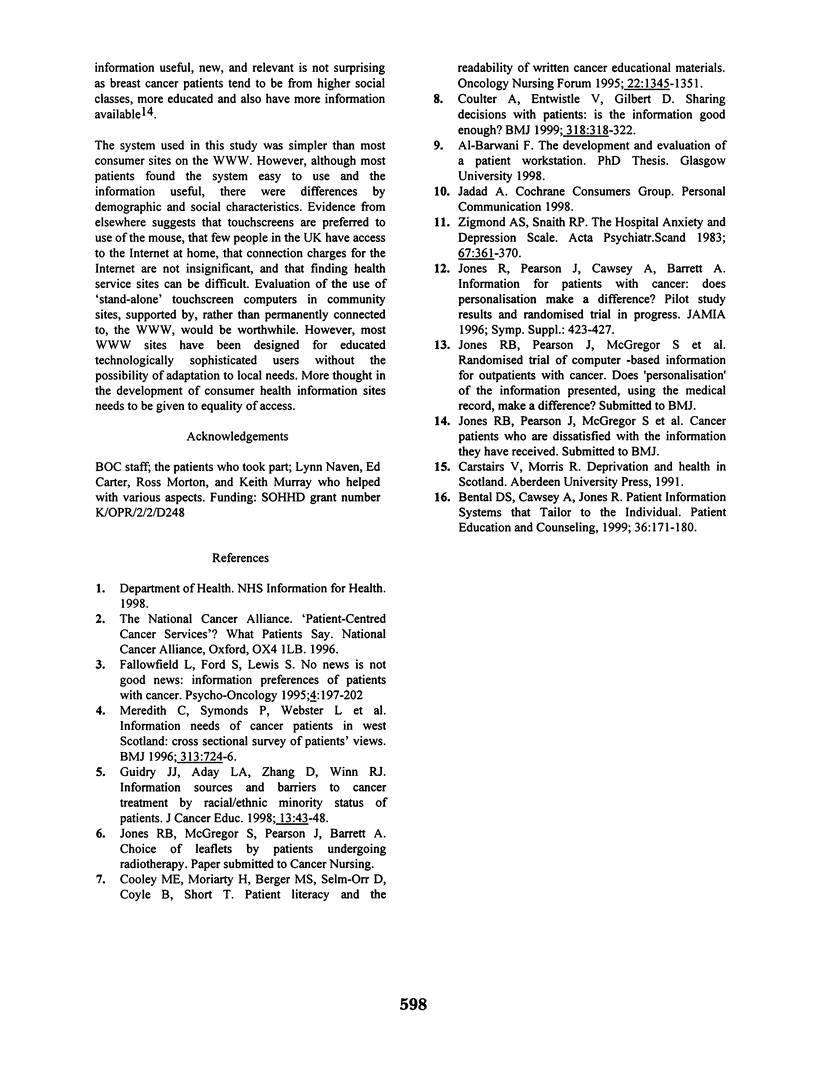
Selected References
These references are in PubMed. This may not be the complete list of references from this article.
- Bental D. S., Cawsey A., Jones R. Patient information systems that tailor to the individual. Patient Educ Couns. 1999 Feb;36(2):171–180. doi: 10.1016/s0738-3991(98)00133-5. [DOI] [PubMed] [Google Scholar]
- Cooley M. E., Moriarty H., Berger M. S., Selm-Orr D., Coyle B., Short T. Patient literacy and the readability of written cancer educational materials. Oncol Nurs Forum. 1995 Oct;22(9):1345–1351. [PubMed] [Google Scholar]
- Coulter A., Entwistle V., Gilbert D. Sharing decisions with patients: is the information good enough? BMJ. 1999 Jan 30;318(7179):318–322. doi: 10.1136/bmj.318.7179.318. [DOI] [PMC free article] [PubMed] [Google Scholar]
- Fallowfield Lesley, Ford Sarah, Lewis Shon. No news is not good news: information preferences of patients with cancer. Psychooncology. 1995 Oct;4(3):197–202. doi: 10.1002/pon.2960040305. [DOI] [PubMed] [Google Scholar]
- Guidry J. J., Aday L. A., Zhang D., Winn R. J. Information sources and barriers to cancer treatment by racial/ethnic minority status of patients. J Cancer Educ. 1998 Spring;13(1):43–48. doi: 10.1080/08858199809528511. [DOI] [PubMed] [Google Scholar]
- Jones R., Pearson J., Cawsey A., Barrett A. Information for patients with cancer. Does personalization make a difference? Pilot study results and randomised trial in progress. Proc AMIA Annu Fall Symp. 1996:423–427. [PMC free article] [PubMed] [Google Scholar]
- Meredith C., Symonds P., Webster L., Lamont D., Pyper E., Gillis C. R., Fallowfield L. Information needs of cancer patients in west Scotland: cross sectional survey of patients' views. BMJ. 1996 Sep 21;313(7059):724–726. doi: 10.1136/bmj.313.7059.724. [DOI] [PMC free article] [PubMed] [Google Scholar]
- Zigmond A. S., Snaith R. P. The hospital anxiety and depression scale. Acta Psychiatr Scand. 1983 Jun;67(6):361–370. doi: 10.1111/j.1600-0447.1983.tb09716.x. [DOI] [PubMed] [Google Scholar]


